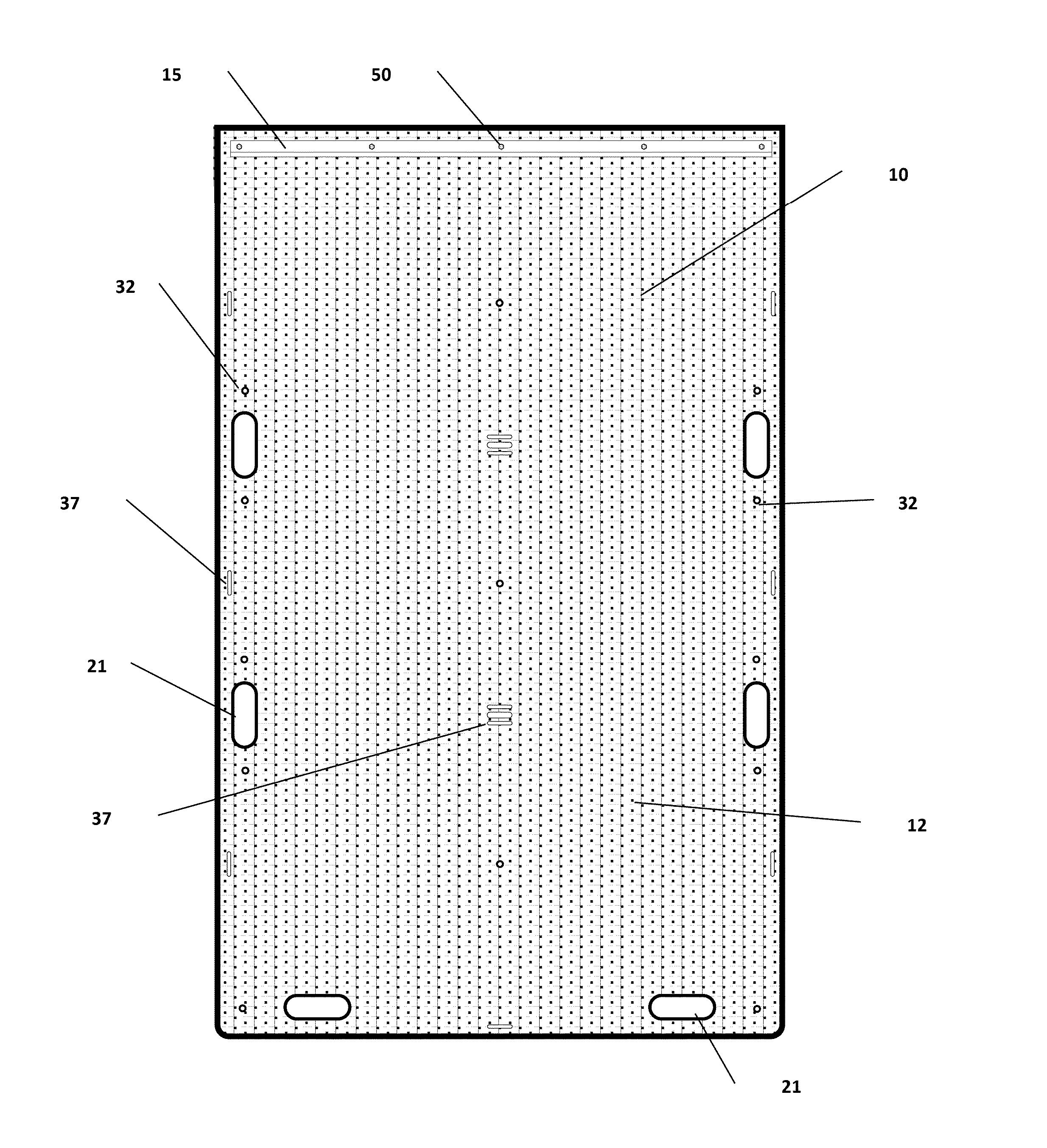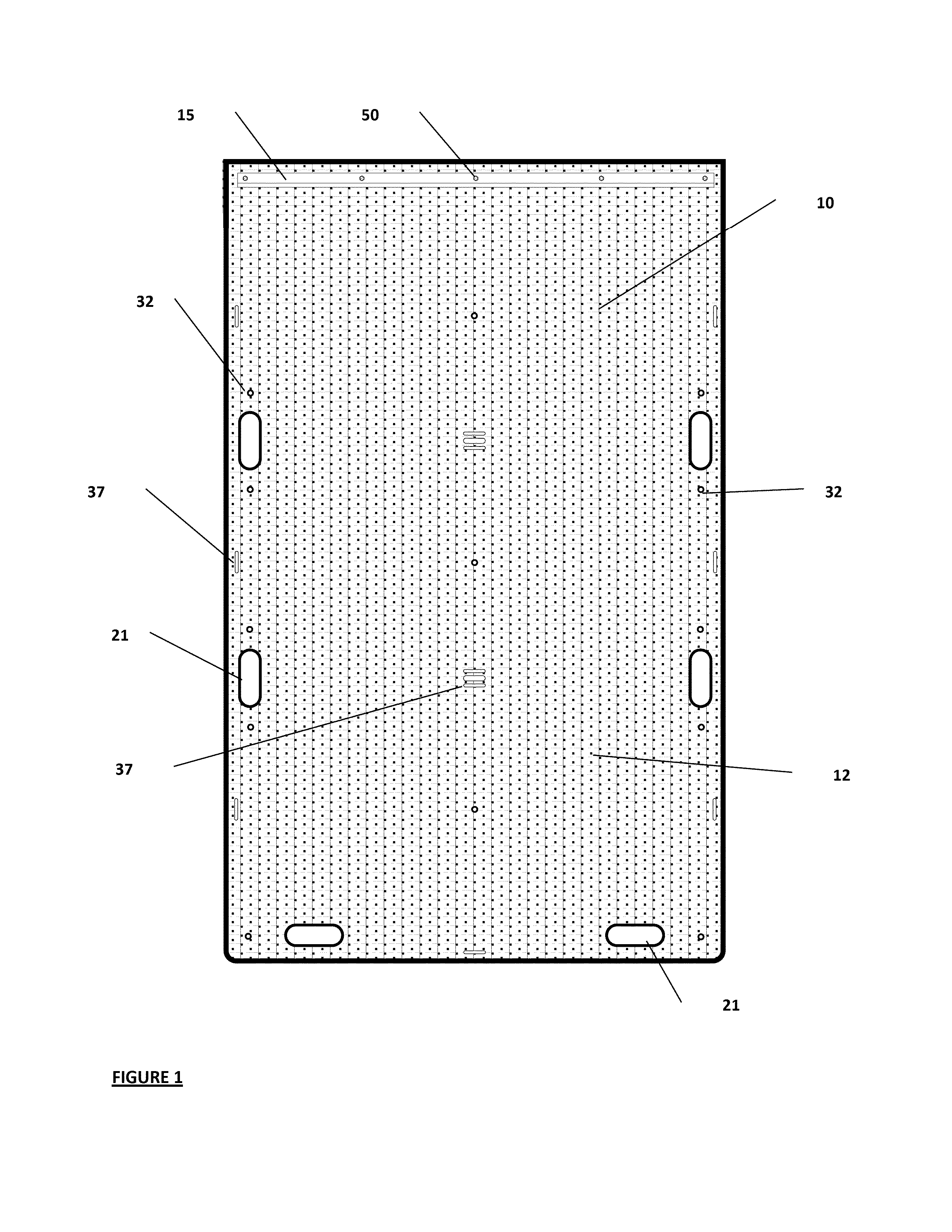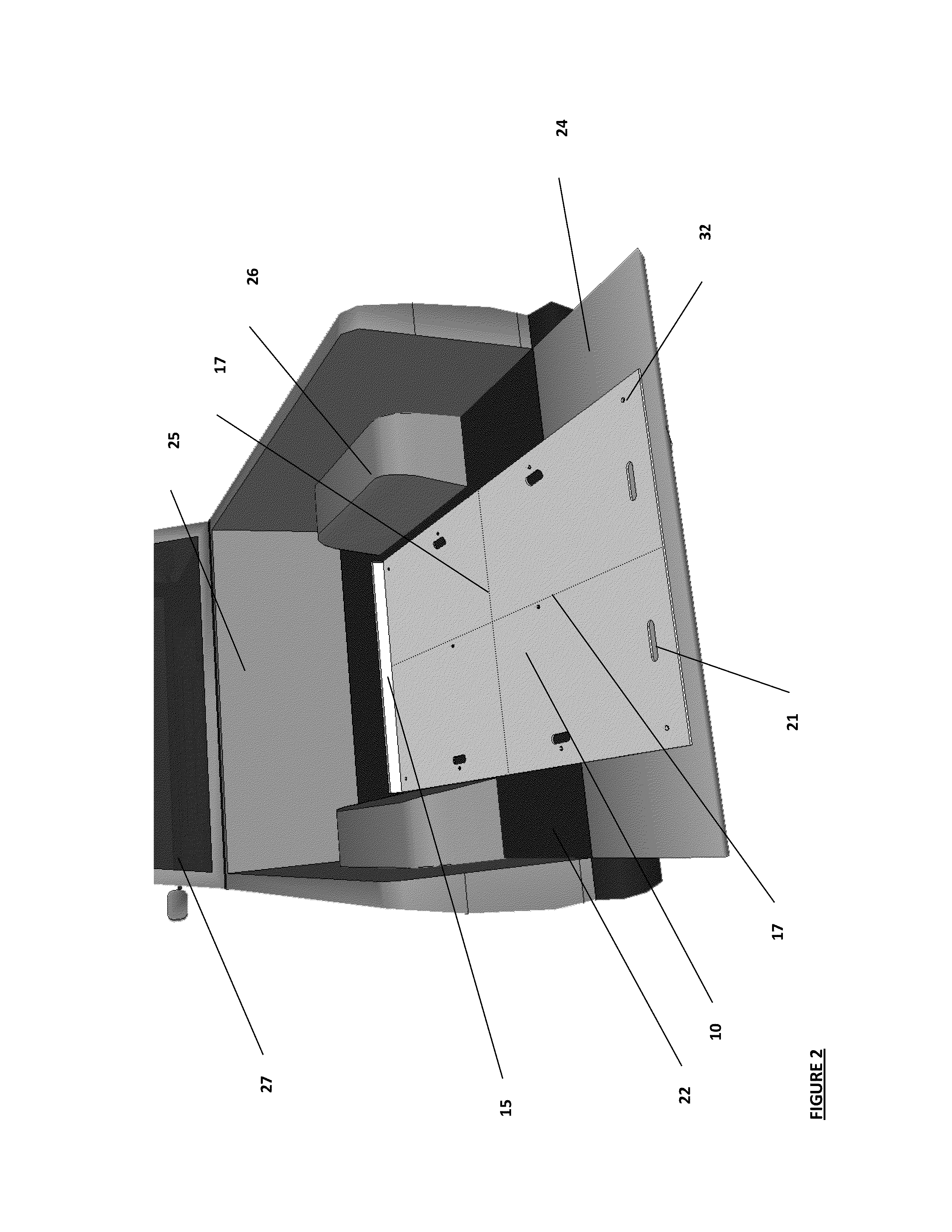Slidable cargo area floor liner and cargo management device
a cargo management device and floor liner technology, which is applied in the direction of loading-carrying vehicle superstructures, monocoque constructions, roofs, etc., can solve the problems of vehicle owners having difficulty in storing items in the cargo space, not effectively preventing movement, and not allowing easy loading and unloading of the cargo area
- Summary
- Abstract
- Description
- Claims
- Application Information
AI Technical Summary
Benefits of technology
Problems solved by technology
Method used
Image
Examples
Embodiment Construction
[0043]FIGS. 1-7 illustrate the preferred embodiment of the apparatus of the present invention, 10. As illustrated in FIG. 1, cargo area floor liner 10, comprises a substantially rectangular plastic polymer sheet having an upper surface 12 with a plurality of eyelets 32 and slots through liner for tie down straps 37. Cargo area floor liner 10 has catch-all 15 attached with screw, bolt, or rivet 50 to the rear of the device. As illustrated in FIG. 2, the liner 10 has been lowered into a truck bed 22 where the tailgate 24 is set down, with the rear end of liner 10 set against the back wall 25 of the cab 27 of the truck. In the embodiment illustrated in FIGS. 1 and 2, the liner 10 resting on the truck bed 22. The liner 10 fitting between the interior of the wheel wells 26 of the truck bed 22. It is in this position that the liner 10 is in position for receiving materials onto the upper surface 12 of liner 10. Further, as illustrated in FIGS. 1 and 2, is a plurality of tie down assemblie...
PUM
 Login to View More
Login to View More Abstract
Description
Claims
Application Information
 Login to View More
Login to View More - R&D
- Intellectual Property
- Life Sciences
- Materials
- Tech Scout
- Unparalleled Data Quality
- Higher Quality Content
- 60% Fewer Hallucinations
Browse by: Latest US Patents, China's latest patents, Technical Efficacy Thesaurus, Application Domain, Technology Topic, Popular Technical Reports.
© 2025 PatSnap. All rights reserved.Legal|Privacy policy|Modern Slavery Act Transparency Statement|Sitemap|About US| Contact US: help@patsnap.com



